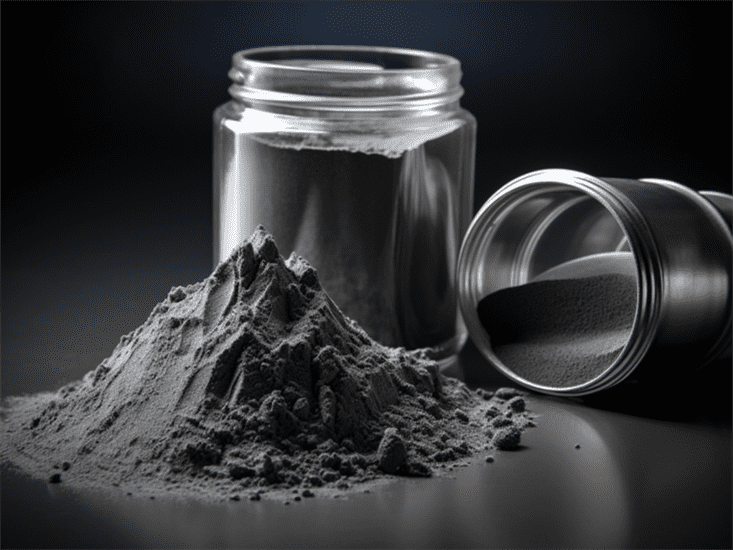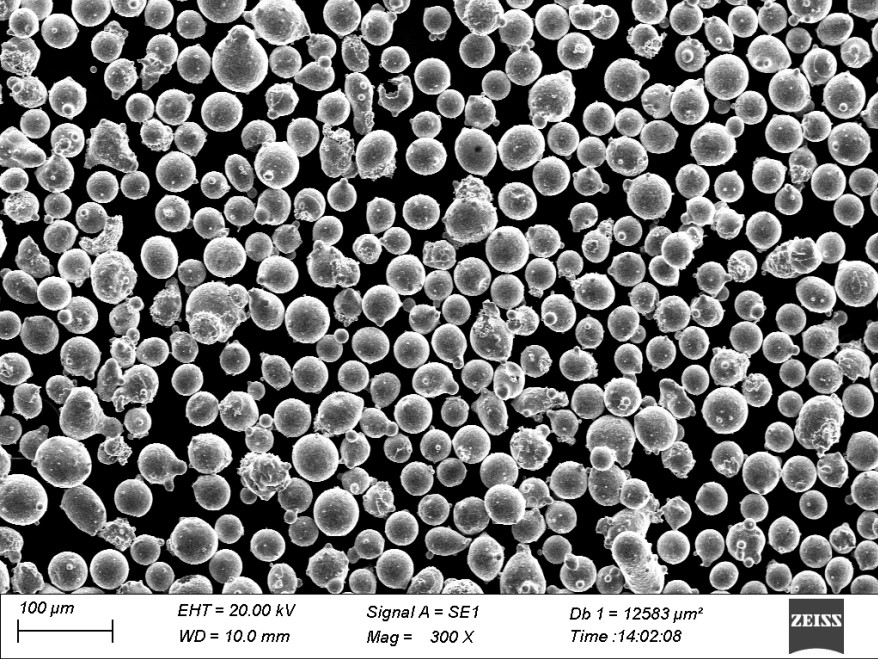概述 SLM 快速成型制造
选择性激光熔融(SLM)是一种快速成型制造技术,它使用激光逐层选择性地熔融金属粉末材料,从而制造出三维物体。选择性激光熔融技术适用于将钛、铝和不锈钢等活性金属加工成具有复杂几何形状的高密度功能部件。
与传统制造相比,SLM 具有多种优势:
SLM 快速成型技术的优势
| 益处 | 说明 |
|---|---|
| 设计自由 | SLM 可以生产复杂的几何形状,如晶格、内部通道和有机形状,这些都是机械加工无法实现的 |
| 定制 | 可轻松定制和优化零件的功能,而非制造限制 |
| 轻量化 | 有机形状和晶格使部件在保持强度的同时实现轻量化 |
| 节省材料 | SLM 仅使用所需的材料量,而不是从实体块上进行加工 |
| 快速原型开发 | 可根据 CAD 直接 3D 打印零件,而无需制作原型模具 |
| 准时化生产 | 按需打印可降低库存成本 |
| 供应链复原力 | 分布式制造降低供应链风险 |
不过,可持续土地管理也有一些局限性:
SLM 快速成型技术的局限性
| 限制 | 说明 |
|---|---|
| 机器成本 | 工业 SLM 机器的前期资本成本高达 $100K-$1M+ |
| 材料选择 | 目前仅限于钛、铝、工具钢和超合金等活性金属 |
| 准确性 | 0.1-0.2 毫米的典型精度低于加工公差 |
| 表面处理 | 印刷表面粗糙,需要进行后期处理 |
| 建筑尺寸 | 最大部件尺寸受打印机腔尺寸限制 |
| 低批量生产 | 对小批量和定制零件而言,与大规模生产相比,最经济实惠 |
| 后期处理 | 需要采取其他步骤,如去除支撑物、热处理 |
SLM 3D 打印如何工作
SLM 是一种粉末床熔融技术,它使用聚焦激光束有选择地逐层熔化和融合金属粉末材料。
可持续土地管理流程的关键步骤包括
SLM 三维打印工艺
| 步骤 | 说明 |
|---|---|
| 三维模型 | 将 3D CAD 模型以数字方式切割成若干层 |
| 撒粉 | 再涂布刀片在构建平台上涂布一层薄薄的粉末 |
| 激光熔化 | 激光束跟踪每一层熔化的粉末,根据切片的 CAD 数据进行粘合 |
| 下层平台 | 降低构建平台,在上面再撒一层粉末 |
| 重复步骤 | 层层熔化过程重复进行,直至整个部件成型 |
| 移除部件 | 完成的 3D 打印部件从粉末床中取出 |
| 后期处理 | 对部件进行清洁和热处理,以消除应力 |
SLM 材料
SLM 能够将一系列活性金属加工成完全致密的部件,包括
SLM 材料
| 材料 | 主要特性 | 应用 |
|---|---|---|
| 钛合金 | 高强度重量比、生物相容性 | 航空航天、医疗植入物 |
| 铝合金 | 重量轻、强度高 | 汽车、航空航天 |
| 不锈钢 | 耐腐蚀、高强度 | 工业工具、船舶 |
| 工具钢 | 高硬度、耐热性 | 注塑模具、模具 |
| 镍超合金 | 耐热性和耐腐蚀性 | 涡轮叶片、火箭喷嘴 |
| 钴铬合金 | 耐磨性、生物相容性 | 牙科植入物、整形外科 |
最常见的 SLM 材料是钛和铝合金以及工具钢和不锈钢。更奇特的超合金和金属复合材料也可以使用 SLM 技术进行加工。
可持续土地管理设计指南
要成功设计 SLM 3D 打印零件,工程师应遵循以下指导原则:
可持续土地管理设计指南
| 指导原则 | 说明 |
|---|---|
| 避免悬挑 | 尽量减少需要拆除支撑物的悬挑部分 |
| 设计锚点 | 包括用于将部件固定在构建板上的小锚点或标签 |
| 定向增力 | 对齐零件,最大限度地提高功能方向的强度 |
| 最小化零件高度 | 调整方向,尽量减小 Z 高度,以避免折叠精致的特征 |
| 允许后加工 | 如果需要严格的公差,则增加 0.1-0.3 毫米的后处理预留量 |
| 优化晶格设计 | 根据零件载荷和 SLM 约束条件调整单元尺寸和支柱尺寸 |
| 包括通风孔 | 增加小孔,防止粉末滞留造成缺陷 |
| 共形冷却通道 | 设计复杂的内部冷却通道,这是钻孔/机加工无法实现的 |
| 合并部件 | 将组件合并为单个零件,以减少装配要求 |
遵循这些准则有助于避免常见的 SLM 印刷缺陷,如表面粗糙度差、变形、开裂或夹粉。
SLM 打印机制造商
主要的 SLM 系统制造商包括
SLM 3D 打印机制造商
| 公司名称 | 打印机 | 主要功能 |
|---|---|---|
| EOS | EOS M290、EOS M300 x4 | 金属 3D 打印的先驱,卓越的部件性能 |
| SLM 解决方案 | SLM 280、SLM 500、SLM 800 | 激光功率极高,可实现高生产率和大制造量 |
| 3D 系统 | DMP 工厂 500 | 适用于大批量生产的可扩展系统 |
| 通用电气添加剂 | 概念激光 M2、X Line 2000R | 现在已成为通用电气的一部分,是可靠的生产力工具 |
| 雷尼绍 | RenAM 500Q | 卓越的精度、综合质量管理系统 |
在选择 SLM 系统时,关键因素包括制造量、激光功率、材料能力、精度和软件工作流程。领先的制造商提供成熟的系统,但也有许多来自中国和印度的新进入者。
SLM 打印机定价
工业 SLM 系统的前期资本成本很高,入门级设备的成本在 $100,000 至 $1,000,000+ 之间,而高端生产系统的成本则在 $1,000,000 以上:
SLM 打印机定价
| 制造商 | 打印机型号 | 建筑体积 | 价格范围 |
|---|---|---|---|
| EOS | EOS M100 | 95 x 95 x 95 毫米 | $100k - $150k |
| SLM 解决方案 | SLM 125 | 125 x 125 x 125 毫米 | $175k - $250k |
| 3D 系统 | DMP 工厂 500 | 500 x 500 x 500 毫米 | $500k - $800k |
| 通用电气添加剂 | 概念激光 M2 5 系列 | 250 x 250 x 280 毫米 | $700k - $900k |
| 雷尼绍 | RenAM 500M | 250 x 250 x 350 毫米 | $950k - $1.2M |
更大的制造量、更高的激光功率和更高的生产率功能都会导致系统成本上升。但关键是要根据应用需求和生产要求做出明智的选择。
可持续土地管理设施考虑因素
要成功运营可持续土地管理设施,企业应考虑以下几点:
可持续土地管理设施因素
| 系数 | 说明 |
|---|---|
| 设施成本 | 计算打印机、材料和设施建设成本 |
| 材料处理 | 安装粉末处理设备并为工人提供个人防护设备 |
| 后期处理 | 清洗设备、热处理、HIP、表面处理等。 |
| 软件 | 用于调度、嵌套和流程监控的工作流程软件 |
| 培训 | 对工程师进行设计培训,对技术人员进行打印机操作培训 |
| 安全 | 遵守粉末处理程序并配备灭火系统 |
| 维护 | 安排定期系统维护和校准 |
| 质量控制 | 测量尺寸和材料特性,重复性测试 |
| 认证 | 监管行业的 ISO 9001、AS9100 认证 |
选择一家经验丰富的服务提供商,可以帮助导航航空航天或医疗设备等受管制应用的设施设置、运营和认证。

SLM 快速成型技术的优势
SLM 三维打印技术的主要优势包括
SLM 快速成型制造的优势
| 优势 | 说明 |
|---|---|
| 复杂几何图形 | SLM 可生产高度复杂的有机形状和错综复杂的内部晶格和通道 |
| 定制部件 | 不受工具限制,轻松创建符合客户需求的定制零件 |
| 减轻重量 | 晶格结构和拓扑优化实现了轻质、坚固的设计 |
| 合并组件 | 将多个部件组合成单一的复杂部件 |
| 快速交付时间 | 直接根据 CAD 数据按需打印零件,而无需花费数月时间进行加工 |
| 减少浪费 | 只使用所需的材料量,而不是从坯料上进行加工 |
| 按需生产 | 实现靠近客户的分布式及时生产 |
| 减少库存 | 根据需要打印部件,降低模具、仓储和库存成本 |
| 高性能材料 | 将钛和超合金等先进金属加工成终端零件 |
自由设计、零件定制和分布式生产能力使 SLM 成为航空航天、医疗、工业和汽车应用领域中小批量生产的理想选择。
SLM 快速成型技术的局限性
可持续土地管理确实存在一些局限性,包括
SLM 快速成型制造的局限性
| 限制 | 说明 |
|---|---|
| 机器成本 | SLM 印刷机的资本成本很高,通常超过 $50 万欧元。 |
| 材料供应 | 目前仅限于活性结构金属和塑料 |
| 准确性 | 典型精度为 0.1-0.2 毫米,低于 CNC 加工精度 |
| 表面处理 | 印刷后的表面相对粗糙,具有阶梯效果 |
| 后期处理 | 经常需要拆除支撑、加工、抛光 |
| 打印速度 | 制造率通常为 5-100 毫升/小时,这限制了速度与批量生产的比较 |
| 最大部件尺寸 | 受打印机体积限制,通常小于 500 x 500 x 500 毫米 |
| 过程监控 | 缺乏现场监测会导致无法发现缺陷 |
| 操作员专业知识 | 可持续土地管理技术人员需要接受大量程序培训 |
| 材料成本 | 金属粉末的价格可能是原材料的 2-5 倍 |
对于高精度需求、超大型零件或大批量生产,数控加工等减法方法往往比 SLM 快速成型方法更适合。
可持续土地管理在制造业中的作用
可持续土地管理最适合:
可持续土地管理在制造业中的最佳角色
| 制造角色 | 实例 |
|---|---|
| 快速原型制作 | 快速设计迭代和概念验证部件 |
| 小批量生产 | 航空航天支架、叶轮、医疗植入物 |
| 桥梁工具 | 在制作注塑模具的同时生产早期单元 |
| 部分合并 | 将多个部件组合成单一部件 |
| 大规模定制 | 定制终端产品,如牙齿矫正器 |
| 分布式制造 | 按需就地生产,靠近客户 |
对于大批量生产而言,传统的高压压铸或注塑往往比 SLM 三维打印更具成本效益。但对于小批量生产而言,SLM 则更胜一筹。
SLM 快速成型技术的未来
未来,可持续土地管理有望通过以下方式扩展到更广泛的应用领域:
可持续土地管理的未来
| 趋势 | 说明 |
|---|---|
| 大型打印机 | 长度和高度超过 1 米的建筑体积 |
| 多激光系统 | 超过 1 千瓦的高功率多激光设备 |
| 更快的速度 | 通过扫描振镜激光器,打印速度高达 500 毫升/小时 |
| 新材料 | 高温合金、MMC、新型复合材料 |
| 混合制造 | 在一个系统中结合 AM 和减法工艺 |
| 自动后处理 | 减少去除支撑物和表面抛光的人工劳动 |
| 过程监控 | 现场监测熔池、粉末床和部件缺陷 |
| 模拟 | 基于物理的模拟,以预测行为和优化构建 |
| 机器学习 | 用于设计、流程优化和质量保证的人工智能 |
| 数字供应链 | 从设计到生产的无缝数字工作流程 |
选择可持续土地管理服务提供商
在选择可持续土地管理服务提供商时,买方应评估:
选择可持续土地管理服务提供商
| 系数 | 说明 |
|---|---|
| 印刷设备 | 寻找声誉好、光束功率高、构建量大的工业金属打印机 |
| 材料 | 加工钛、工具钢、不锈钢等理想合金的能力 |
| 后期处理 | 提供全方位的印后加工,如 HIP、机加工、抛光 |
| 质量程序 | 通过 ISO 9001 或 AS9100 认证,具有严格的质量保证流程 |
| 应用体验 | 航空航天、汽车、医疗等目标应用领域的专业知识和案例研究 |
| 设计支持 | 设计和优化部件以实现 AM 可制造性的能力 |
| 前导时间 | 在规定时间内交付样品和生产部件的能力 |
| 文件准备 | 通过设计分析接受标准 CAD 和多边形文件格式 |
| 后期服务 | 清洗、热处理、表面精加工、涂层服务 |
| 附加服务 | 检测、快速成型、桥梁工具、铸件、成型 |
| 定价 | 具有竞争力和可扩展性的定价适用于不同的建造量 |
| 地点 | 为供应链物流和通信提供就近服务 |
选择一家具备从设计到后期处理的端到端能力的服务提供商,可确保获得高质量的结果。查阅案例研究和参观设施有助于验证经验。

常见问题
问:哪些材料可以使用 SLM 技术进行 3D 打印?
答:SLM 能够加工一系列活性金属,如不锈钢、工具钢、钛合金、镍超级合金、铝合金和钴铬合金。最受欢迎的 SLM 材料是 Ti6Al4V 钛和 AlSi10Mg 铝。
问:SLM 3D 打印的精确度如何?
答: SLM 的精度通常在 0.1-0.2 毫米左右。虽然低于 CNC 加工公差,但加工和抛光等后处理可提高精度。不建议使用 0.3 毫米以下的特征尺寸。
问:哪些行业使用 SLM 快速成型技术?
答:航空航天、医疗、牙科、汽车和工业领域是 SLM 技术的主要用户,因为它具有轻量化、部件整合、大规模定制和快速周转时间等优势。
问:SLM 印刷后需要进行哪些后处理?
答:常见的印后加工包括去除支撑物、消除应力热处理、热等静压(HIP)、数控加工、抛光和涂层。具体要求取决于应用、材料和表面处理需求。
问:SLM 金属 3D 打印的成本有多高?
答:工业 SLM 系统的价格从 $100,000 到超过 $100 万不等,具体取决于构建量、激光功率和功能。金属粉末的材料成本可能是原材料成本的 2 到 5 倍。但总成本正在下降。
问:SLM 能否打印悬臂和复杂形状?
答:是的,通过使用支撑结构,SLM 可以打印悬垂、格子和薄壁等几何形状。需要小心定位,以避免变形和平衡支撑要求。
问:SLM 印刷使用什么软件?
答:SLM 打印机配有专用的打印软件。其他软件用于设计、文件修复、模拟、构建准备、排版、构建管理和质量管理。
问:使用 SLM 3D 打印一个部件需要多长时间?
答:打印时间从数小时到数天不等,取决于零件尺寸、几何形状复杂程度和打印参数。对于金属零件,SLM 打印机的构建速度通常为 5 至 100 毫升/小时。较大的零件需要更长的时间。
问:SLM 是否能生产出安全、实用的最终使用金属零件?
答:是的,通过适当的设计和加工,SLM 可以生产出完全致密的金属零件,其材料性能达到或超过传统制造的零件,可用于要求苛刻的应用中的功能性最终用途。
